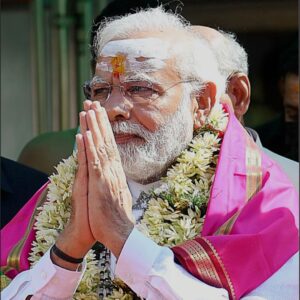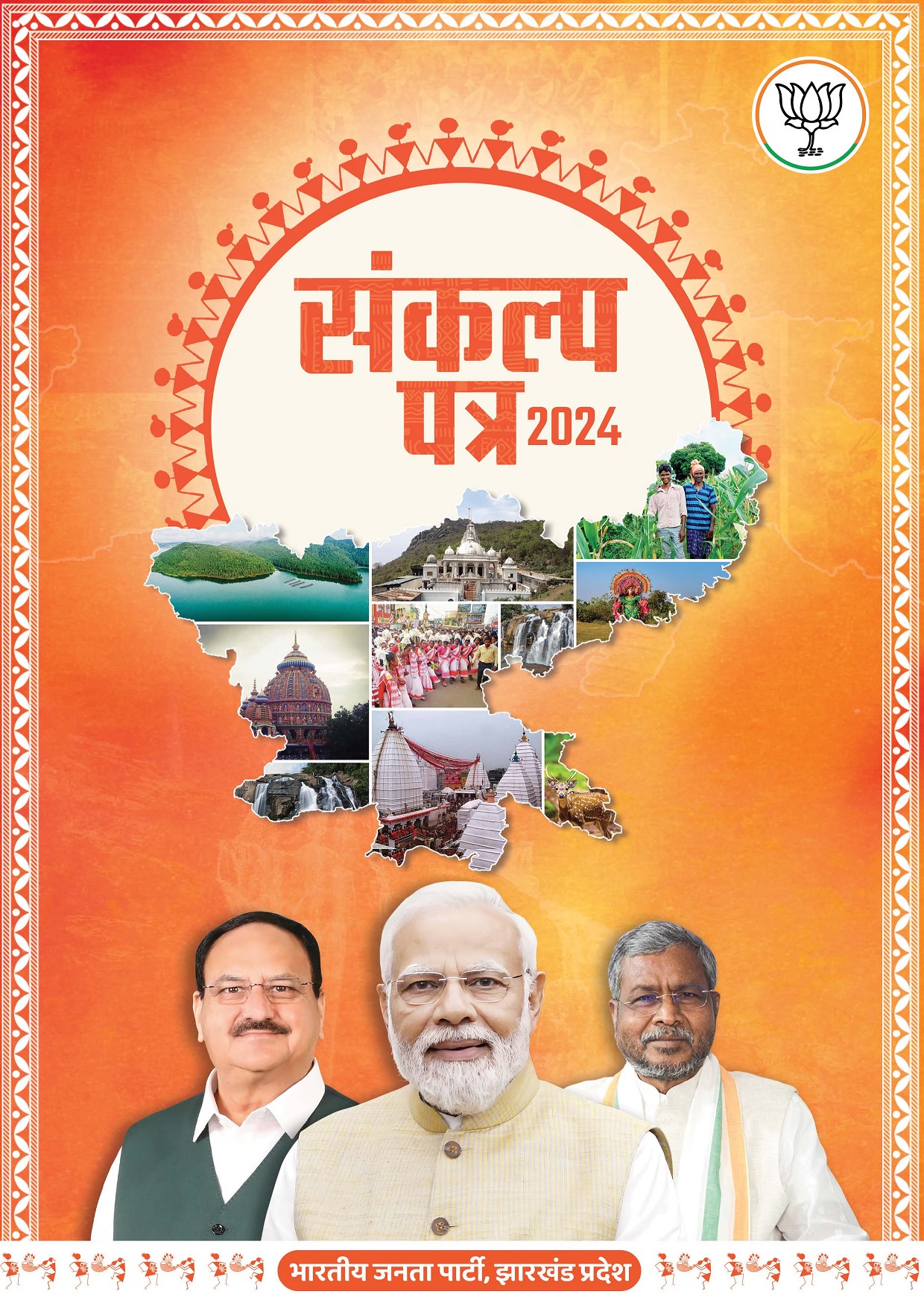Ahead of the 2024 Jharkhand assembly elections, the BJP released its manifesto on Saturday, prominently featuring Prime Minister Narendra Modi’s image on nearly every third page. In the 76-page manifesto, Modi appears no fewer than 23 times.
In contrast, the party’s prominent Adivasi leaders, including former chief ministers Babulal Marandi and Arjun Munda, are almost absent. Similarly, the manifesto lacks representation of women leaders, especially Adivasi women, raising questions about the party’s commitment to women’s empowerment.
Several pages are entirely devoted to photos of Modi, while Adivasi leader Marandi appears only in two, visibly smaller images. Arjun Munda is visible only in the background of a photograph where Modi occupies the central position.
In the images featured, Modi is seen paying tribute to Adivasi icons such as Birsa Munda (1875-1900), Telanga Kharia (1806–1880), and Veer Budhu Bhagat (1792–1832). In another image, Modi is shown among a group of women, an apparent attempt to convey his appeal as a leader admired by women, committed to their welfare.
Elsewhere, Modi is pictured distributing benefits from the Prime Minister Kisan Mandhan Yojana. Another photo captures him interacting with a potter, and yet another shows him playfully engaging with children.
While some of these images depict Modi’s gestures towards Adivasis and vulnerable communities, a large-sized photograph on page 67 of the manifesto shows him with folded hands, his forehead marked with religious symbols. For some, this image signals his identity as an RSS cadre, underscoring that his engagement with Adivasi communities does not detract from his adherence to, or dereference of, RSS traditions.

Apart from the National President of the Bharatiya Janata Party (BJP) J.P. Nadda and former Prime Minister Atal Bihari Vajpayee, no other prominent BJP leaders are featured, reflecting Modi’s continuing dominance within the party.
In a parliamentary democracy, the rise of hero-worship and the dominance of one leader over both the party and the government is seriously concerning.
In a caste-based society like India, no individual can claim to represent the interests of all groups. That is why social diversity should be reflected in all institutions, from political parties to government bodies.
The dominance of Modi also challenges the BJP’s claims of being run by “democratic” principles and having “ample space” for internal debates and discussions. But Modi’s rise within the BJP’s central leadership has not only marginalized his rivals but also overshadowed the presence of his supporters.
The BJP Jharkhand manifesto also omits Dalit and OBC leaders from Jharkhand. Nor has the party offered any substantial program for the welfare of the Dalit (12%) and OBC population in the state.
While the manifesto declares the party’s commitment to 27% reservation for OBCs to appeal to the state’s other backward castes, the JMM-led Hemant Soren government has already decided to raise OBC reservation to this level years back. Moreover, while the BJP aims to rally Adivasi voters by emphasizing the threat of “Bangladeshi infiltrators” in Santhal Pargana, it has made no significant gestures toward the state’s Muslim minority.
Along with the Muslim minority (14.5%), the concerns of the Christian community, which constitutes 4.3% of the population, have also been ignored.Similarly, major issues such as the exploitation of Jharkhand’s resources and the displacement of Adivasis have been sidestepped by focusing on the “threats” of Muslim infiltration and “Naxalism”.
What remains consistent across the pages of the manifesto, however, is the extensive display of Modi’s images.
(The author is an independent journalist)
Related:
The curious case of Mumbai Mahanagari’s 36 seats: who holds the winning card?
Suresh Chavhanke: The voice of extremism and champion of division media

